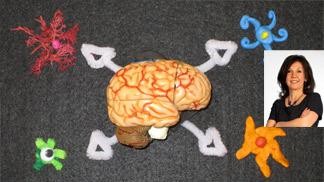New analysis method disentangles molecular changes in human disease..

© 2011 EPFL
Understanding molecular changes that occur in human diseases is the key to developing new drugs and therapies.
A novel method, developed at the EPFL School of Life Sciences by Dr. Alexandre Kuhn and Prof. Ruth Luthi-Carter, is described in a new publication in Nature Methods (Oct 9th; DOI:10.1038/10.1038/nmeth.1710). In complex human tissues like brain or blood, however, the presence of heterogeneous cell types, each with a specific function and potentially different involvement in disease, makes this task very challenging. This new computational method can separate the individual contributions of different cell types, acting like a virtual microscope to improve the resolution of molecular analyses.
Applying their method to gene expression changes in the brains of individuals affected by the neurodegenerative disorder Huntington’s disease, Kuhn and colleagues were able to detect changes in all four major brain cell types. In addition to specific changes in neurons, the cells progressively lost as a result of the disease, their analysis revealed involvement of oligodendrocytes, a specialized cell type that supports neuronal function by improving electrical signal transmission. Specific consideration of oligodendrocytes and better delineation of the changes occurring in the different brain cell types is expected to help unravel new molecular mechanisms contributing to neuronal death in this fatal disease.